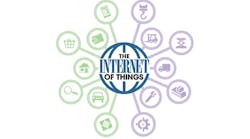The Internet of Things (IoT) is a topic I was only casually acquainted with last summer when I was told we’d be publishing an article on said topic this year. IoT refers to future communication networks of low-power sensors on every “thing” from valve spools, pumps, and cylinders, to home appliances and even people. Billions of these sensors will transmit information to let people better manage factories, hospitals, municipal services, homes, and their everyday lives—sometimes without them even knowing it. That’s because computers and actuators will also be networked to these “things,” and they will process incoming sensor signals to make decisions on whether to speed up, slow down, open, close, or shut down—all without human intervention.
Proponents of this technology are really excited. Some predict that the IoT will encompass 26 to 30 billion devices that will be hooked into the Web by the year 2020. One source put the number of things hooked up to the Internet at about 13 billion as of last May. So to get to “only” 26 billion things, we’d have to add 7 million new devices every day for the next five years.
One impediment that could seriously reduce these numbers is a lack of standardization. Even if standardization were to happen in only a year (yeah, that’s going to happen), that would mean even greater growth would have to occur to reach even the most modest predictions. And what about security? We’ve all heard the horror stories of people hacking into business and government networks. Hacking into credit-card accounts costs money. Hacking into machines could cost lives—and plenty of them.
So let’s see how things transpire. Personally, I’m already impressed with how far we’ve come. When I began my professional career, people argued about whether a PC was a programmable controller or personal computer. Now we have PCs and PLCs on a chip. Factories and mobile equipment vehicles contain digital bus networks and wireless sensors and communicate with cellular phones and are guided by global positioning systems.
For more on this topic, check out an article from our sister publication, Machine Design: The Internet of Things: Our Inevitable Future or a Pipe Dream?

